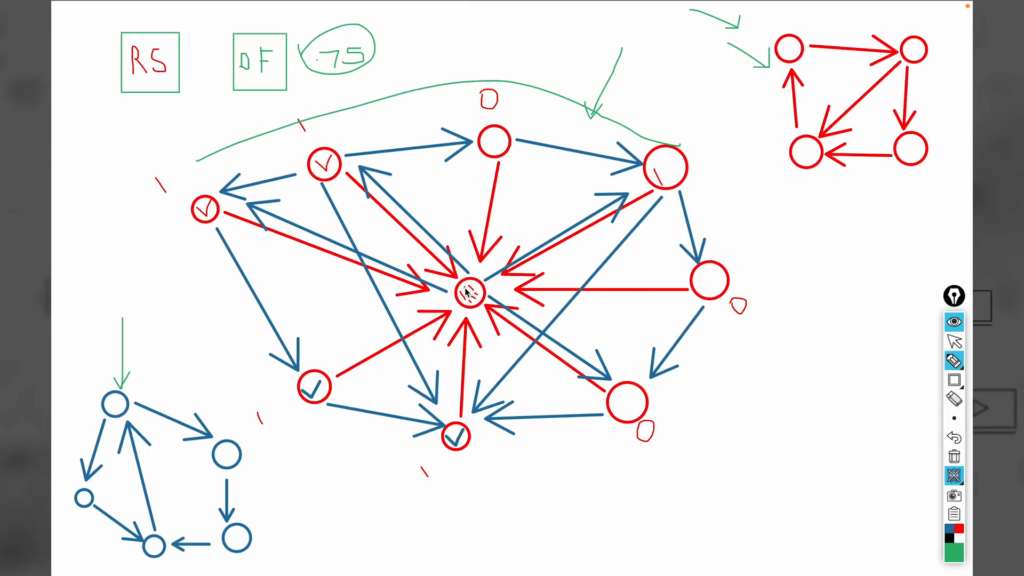In the world of Search Engine Optimization (SEO) that is undergoing constant change, one needs to have an idea of how Google ranks websites. Out of the many metrics that impact the ranking of a website, Link Analysis Systems and PageRank are basic. In this article, we examine these theories closely, including their development, importance, and influence on how one’s site is viewed by search engines.
What are Link Analysis Systems? 🔗
Link Analysis Systems is the evaluation of links between webpages and spaces to define their relevance. For this reason, this strategy was revolutionary to search engines since it was now possible to rank a webpage on the number and quality of links that linked to it. Before link analysis, search engines were mostly based on keyword manipulation.

The advent of link analysis changed the dynamics of how search engines operate. Rather than just giving regard to factors such as the number of keywords, they also sought to find out the relations between different pages by links. This was useful in explaining the authority of the webpage. Since users tend to trust a handful of websites only, this became more crucial as the web developed as users found it harder and harder to contain relevant information.
The Evolution of Search Engines 🕵️♂️
One of the main requirements for appreciating link analysis is understanding how search engines have developed this capability. At that time when the internet had just started, text link directories, for example, DMOZ were the commonly used sources. With time and the growth of the internet, the necessity for advanced search engines started being felt.

In 1987, the first search engine, Archie, was introduced. However, it only provided limited access to search through FTP servers instead of the web. In the wake of the early ‘90s, search engines started to surface that were capable of crawling and indexing web pages. Among these, AliWeb is worth mentioning, launched in November 1993 as the first real search engine, allowing webmasters to submit pages for indexing.
Introduction of PageRank 📊
PageRank is yet another feather in the cap for link analysis pioneered by Larry Page and Sergey Brin. Previous algorithms were too simplistic as they counted the number of links without putting any value on the links themselves. This implied that a hyperlink from an authoritative site was more valuable than one from an unknown site.

The essence of PageRank lies in its ability to determine a page’s importance based on the links it receives. The formula considers both the quantity and the quality of incoming links, making it a more robust measure of a page’s authority. This innovation helped Google become the most powerful search engine globally by providing more relevant search results.
Understanding the PageRank Formula 🧮
The PageRank formula is relatively straightforward, yet it encapsulates complex concepts of link analysis. At its core, it calculates a page’s rank based on the number of links pointing to it, adjusted for the rank of the linking pages. The formula can be expressed as:
| Variable | Description |
|---|---|
| P | The page being ranked |
| K | The pages linking to P |
| C | Constant factor to adjust the rank |
This formula is not the final version, as it includes a damping factor that accounts for the probability of a user continuing to click on links. Understanding this formula is crucial for optimizing your website’s SEO strategy.
The Random Surfer Model 🏄♂️
To tackle the challenges of computing PageRank with more accuracy, the researchers came up with the concept of the Random Surfer Model. This describes a user’s behavior focused on the possibilities of random clicks while using the web. The damping factor accounts for a percentage of the jumps made between pages at random.

The Rough Surfer Model improves PageRank by incorporating the probability of user navigation skimming on different pages as opposed to just moving to another connected page. This helps Google to strike a chord between the most visited pages and the pages one would barely visit but which contain important information.
The Importance of Backlinks in SEO 🌐
Backlinks are still the core of SEO strategies. The amount and quality of backlinks are of great importance when looking at the ranking of a page. The more valuable backlinks a page has, the better ranking it will get during the search which theoretically should increase traffic.

Nonetheless, it is important to obtain backlinks, if possible, only from sites relevant and authoritative to your website. Links generated from websites that are not relevant to your business or are of poor quality can be damaging to your website. Hence, there must be a clear structuring of the backlink strategy as part of the successful SEO campaign.
Conclusion: Optimizing for Link Analysis Systems and PageRank 🔑
Link analysis and PageRank are very critical aspects of any SEO practitioner. Such ideas will assist you in improving the authority of your website and elevating its ranking within the search engines. Instead, emphasize the development of links and content that adds value to your target audience.

